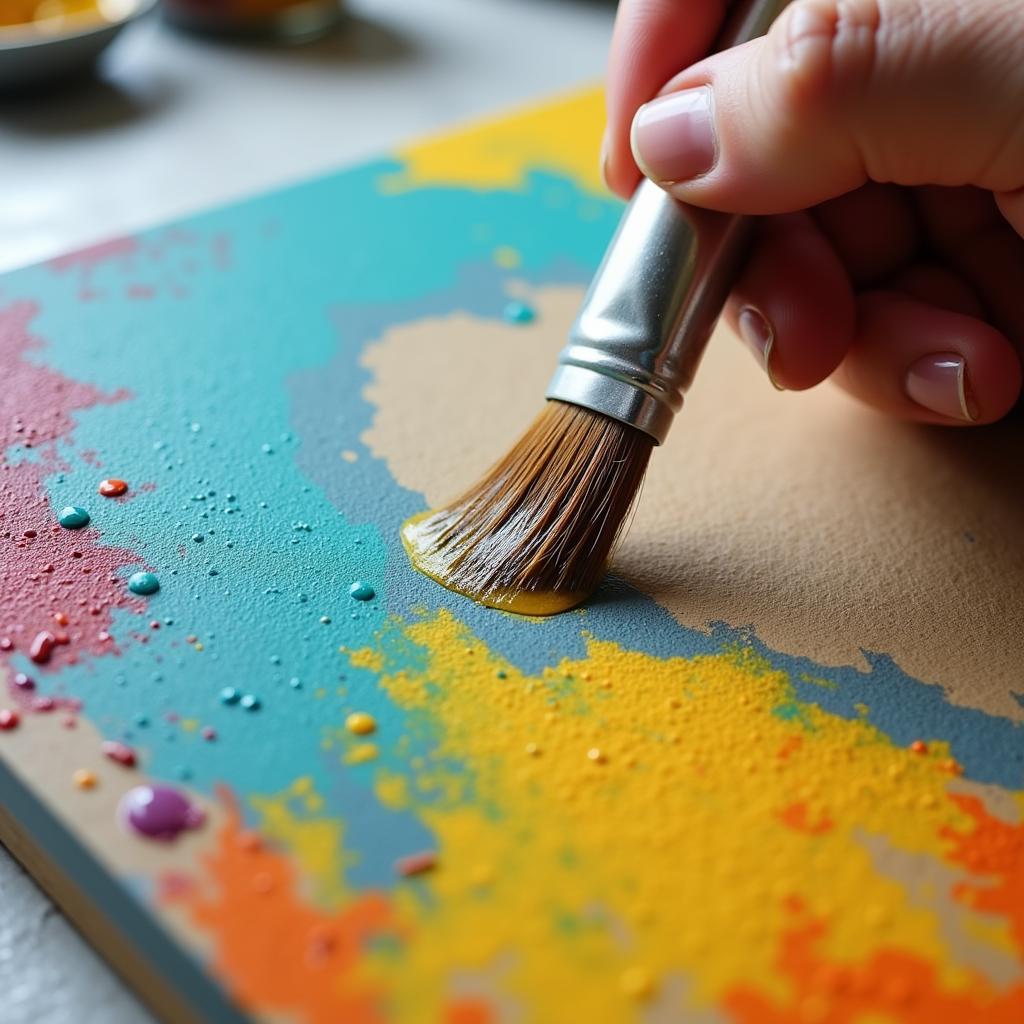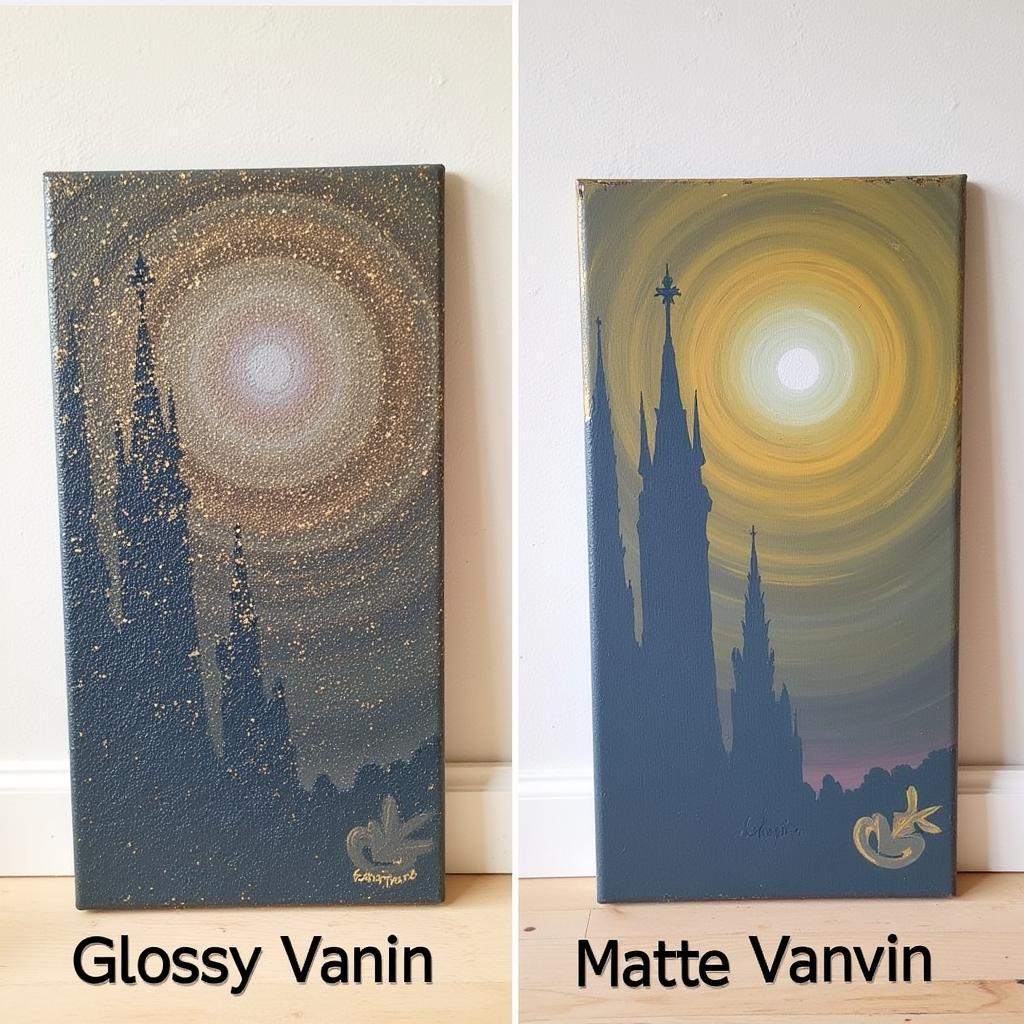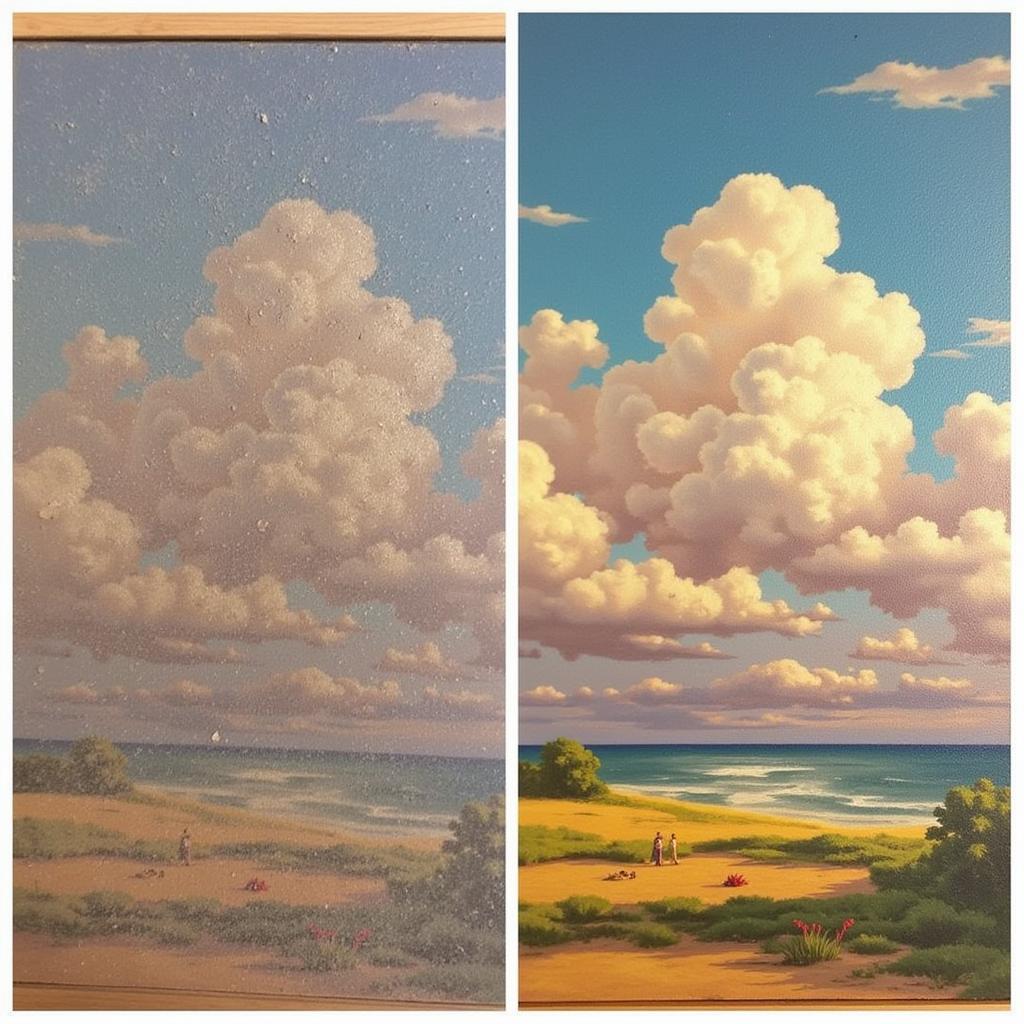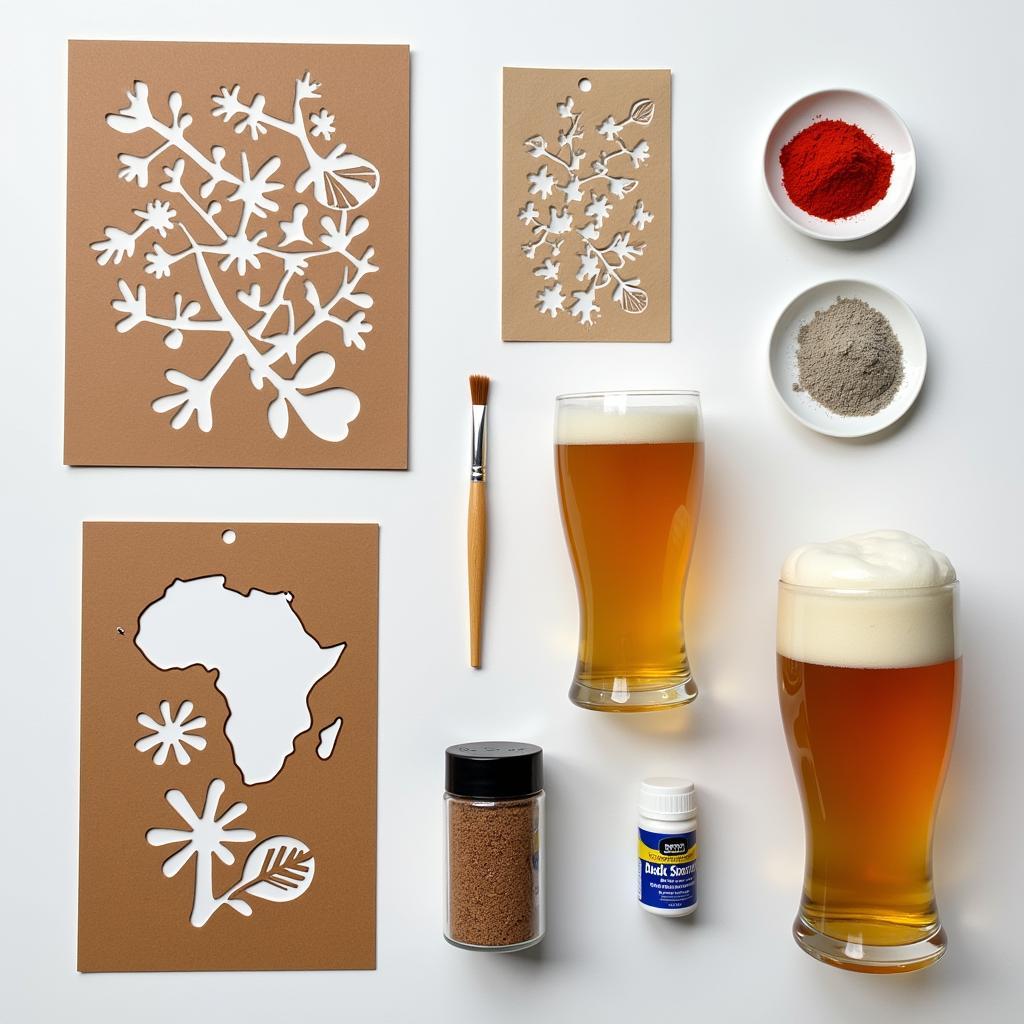Exploring the World of Art Coat
Art Coat, a crucial element in preserving and enhancing artistic creations, plays a vital role in the world of art. Whether you’re a seasoned artist or a passionate hobbyist, understanding the nuances of art coats can elevate your artwork and ensure its longevity.
 Applying Art Coat to Canvas
Applying Art Coat to Canvas
What is an Art Coat?
An art coat, in essence, is a protective layer applied to the surface of artwork. It acts as a shield against environmental factors like dust, UV rays, and moisture, all of which can degrade the quality of your masterpiece over time. Think of it as a barrier that preserves the vibrancy of your colors, the sharpness of your lines, and the overall integrity of your artwork.
Different Types of Art Coats
Just like the diverse range of art materials, art coats come in various forms, each catering to specific needs and preferences.
Varnish
A traditional favorite, varnish offers a glossy finish that can intensify the depth and richness of your colors. It’s available in both permanent and removable options, providing flexibility for future touch-ups or alterations.
Acrylic Polymer Varnish
As the name suggests, this type of varnish utilizes acrylic polymers to create a protective layer. It’s known for its durability, non-yellowing properties, and resistance to cleaning solvents, making it a popular choice for artists seeking long-lasting protection for their work.
 Comparing Art Coat Finishes
Comparing Art Coat Finishes
Spray Varnish
For ease of application, spray varnishes offer a convenient solution. They dry quickly and evenly, minimizing the risk of brushstrokes. However, it’s essential to apply them in well-ventilated areas and to use thin, even coats to prevent drips or uneven finishes.
Choosing the Right Art Coat for Your Needs
Selecting the ideal art coat depends on several factors:
- Type of artwork: Watercolors, acrylics, oils – each medium reacts differently to various art coats. Consider the specific requirements of your chosen medium.
- Desired finish: Are you aiming for a glossy, satin, or matte finish? Each option offers a different aesthetic, impacting the overall look of your artwork.
- Application method: Brushes, sprays, or rollers – each method has its pros and cons. Consider your comfort level and the scale of your project.
Application Tips for a Professional Finish
Applying an art coat requires a delicate touch and careful attention to detail. Here are some tips:
- Clean Surface: Ensure your artwork is completely dry and free from dust or debris.
- Controlled Environment: Work in a well-ventilated area with minimal dust particles.
- Thin Coats: Apply thin, even coats to prevent drips, bubbles, or uneven finishes.
- Drying Time: Allow ample drying time between coats and before handling the artwork.
Frequently Asked Questions
1. Can I apply an art coat to a wet painting?
No, it’s crucial to allow your artwork to dry completely before applying an art coat. Applying it to a wet surface can trap moisture and damage your artwork.
2. How many coats of art coat should I apply?
Two to three thin coats are usually sufficient to provide adequate protection. However, always refer to the manufacturer’s instructions for specific recommendations.
More Art Resources
For insights into other art techniques and materials, explore these related topics:
 Preserving Artwork with Art Coat
Preserving Artwork with Art Coat
Conclusion
Art coat, an indispensable tool for artists, safeguards the beauty and integrity of your creations. By understanding the different types, choosing the right one for your needs, and applying it correctly, you can ensure your artwork stands the test of time. Remember, investing in a quality art coat is an investment in the longevity and brilliance of your art.
For any assistance or inquiries, please contact our 24/7 customer support team at Phone Number: 02462573573, Email: danteum@gmail.com. You can also visit us at Savico Megamall, 7-9 Đ. Nguyễn Văn Linh, Gia Thụy, Long Biên, Hà Nội 10000, Việt Nam.


